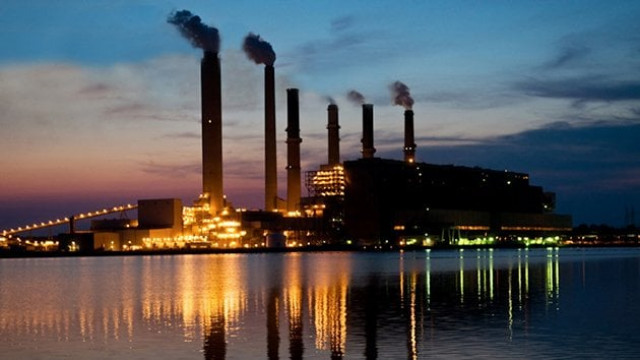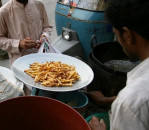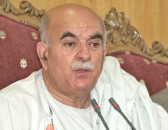Several China-sponsored power projects hit snags
Only 5,000MW out of 8,810MW will be available by next year.

A file photo of a power project. PHOTO: AFP
Power projects having a cumulative capacity of about 5,000 megawatts under CPEC would be operational by 2017 and 2018, Planning, Development and Reforms Minister Ahsan Iqbal announced at a news conference on Wednesday. It was his first interaction with media after attending the sixth meeting of CPEC Joint Cooperation Committee (JCC) in Beijing.
China would like to involve other countries in CPEC after consulting Pakistan: Beijing
At present, the minister said, over 8,000MW CPEC energy projects were at various stages of construction and financial close. In addition to these, another 5,000MW non-CPEC projects will be ready by 2018, which will help meet energy shortages in the country.
However, under the CPEC framework agreement, Pakistan and China had agreed that thermal, wind and solar power projects of 8,810MW would start running in 2017 and 2018. In addition to these, two hydroelectric power projects of 1,570MW would begin operation around 2020.
All of these have been described as “prioritised projects” in the sovereign CPEC framework agreement.
Lingering inter-ministerial disputes and inclusion of non-bankable projects in the CPEC framework were main reasons for the delay in the power projects, said sources in the Ministry of Water and Power and Ministry of Planning.
In the third meeting of JCC held on August 27, 2014, 21 energy projects valuing $33.8 billion had been identified as Early Harvest prioritised projects.
They pointed out that the 1,320MW Rahim Yar Khan coal-based power project was not financially viable as there was no transmission line at the project site.
Similarly, a 300MW plant was planned to be set up in the Salt Range in Punjab, but water and allied facilities were missing there.
The Ministry of Water and Power and Wapda had also reservations about a 300MW project at Gwadar, said the sources. Last year, the ministry had warned the sponsors of five energy projects to fast-track work or the schemes would be dropped from CPEC.
Responding to a question, the planning minister said some of the delayed projects would be made operational by 2019 and 2020.
For swift implementation of the CPEC projects, Prime Minister Nawaz Sharif on Wednesday directed the planning ministry to devise a framework, said Iqbal.
Overall, Pakistan and China expressed satisfaction over the energy projects during the sixth JCC meeting.
The JCC noted that 12 projects including the Sahiwal coal-fired power plant and Port Qasim coal-fired plant were under construction or nearing financial close. Investment in these projects with total capacity of 8,130MW will reach about $16 billion.
The planning minister said China and Pakistan had agreed to revive the 300MW Gwadar electricity project as many commercial activities at Gwadar city were linked with completion of the project.
During the JCC meeting, both the sides noted the importance of early implementation of the Gwadar imported coal-based power project for fast-track development of the Gwadar Industrial Economic Zone.
It was agreed that to ensure early implementation of the project, the Private Power and Infrastructure Board would issue a Letter of Intent within three days after the submission of required bank guarantees.
Agreements will be signed within three months after the issuance of Letter of Support to China Communication Construction Company or its nominee subsidiary with a view to starting work by March 31, 2017.
However, the JCC expressed concern over the slow pace of progress on the Eastbay Expressway of Gwadar Port and New Gwadar International Airport.
Zardari says his party pioneered CPEC
The planning minister, however, clarified that China required more time for completing procedural formalities for the airport and expressway.
During the meeting, Pakistan also requested China to accelerate implementation of the airport and expressway projects, which were critical to the development of Gwadar as a port of international standing.
Published in The Express Tribune, January 5th, 2017.



















COMMENTS
Comments are moderated and generally will be posted if they are on-topic and not abusive.
For more information, please see our Comments FAQ